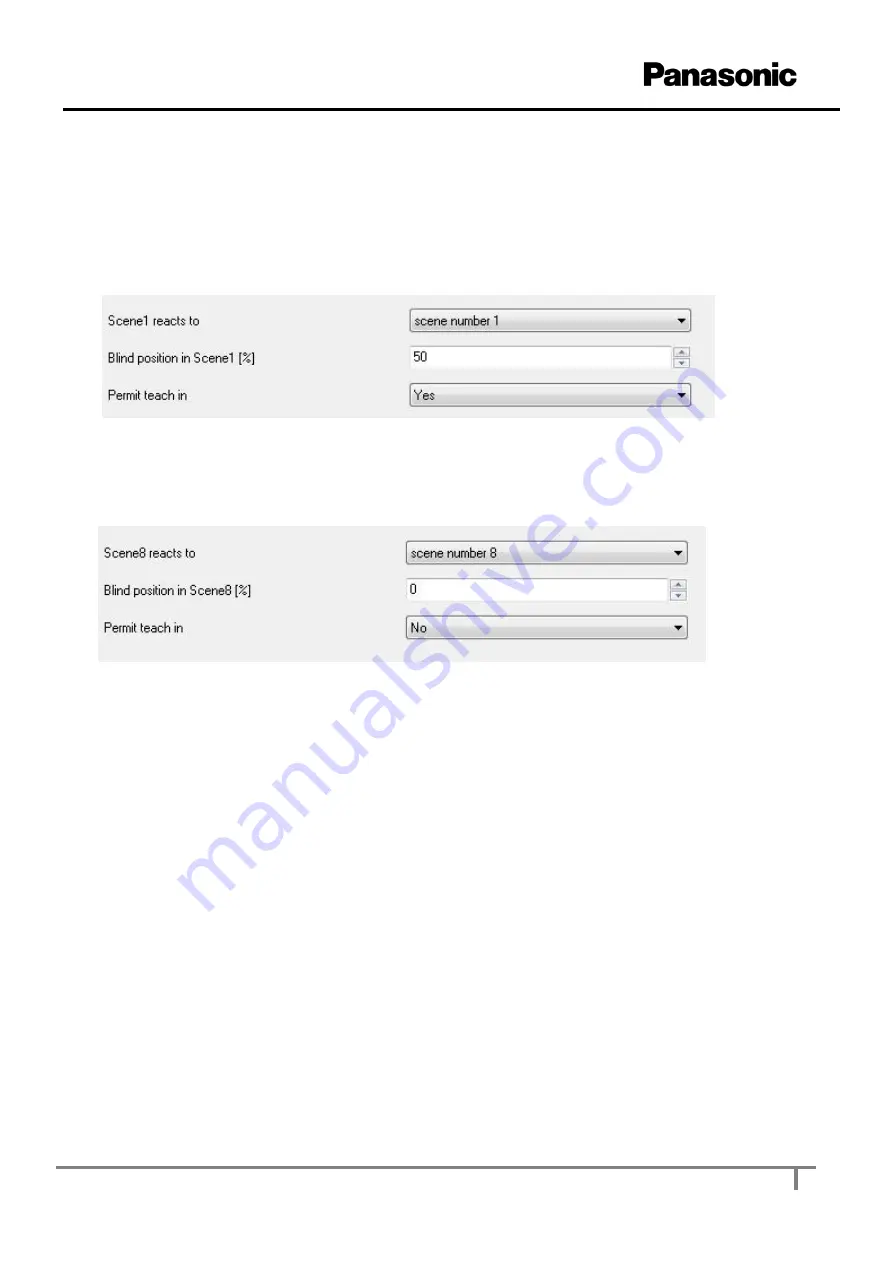
Switching/Blind Actuator
38
If a scene in which the channel is participating is taught in via the scene object, the current height of
the blind is saved. It does not matter whether the position was reached via the buttons or via a bus
telegram. If a scene in which the channel is participating is called via the scene object, the drive will
adopt the previously saved height position. Channels not
participating in the scenes are not affected by
this.
.
.
If a value between “1” and “64” is sent to Access/save scene object, this means that the participated
blind channels are recalling for the scene number that has been sent. The blind will travel to the level
of the scene number that is specified in Blind position in Scene [%] parameter.
If a value between “127” and “192” is sent to Access/save scene object, this means that the
participated blind level will be saved for the scene number that has been sent. For saving, the scene
number saving must be permitted by Permit teach in parameter.
4.2.3.10
Safety Functions
The actuator can handle up to three different safety functions with three Safety objects (Saftey1,
Safety2 and Safety3). Each safety function has of its own communication object so that the functions
can be activated or deactivated independently. The safety functions can be used to protect blinds,
shutters or awnings on several building facades from winds, gusts, rains or frosts. The telegram
polarity of the safety objects is fixed: "0" = no alarm / "1" = alarm. As a rule the communication
objects of the safety function are controlled by weather stations that use sensors to record temperature,
wind speed and rain.



































